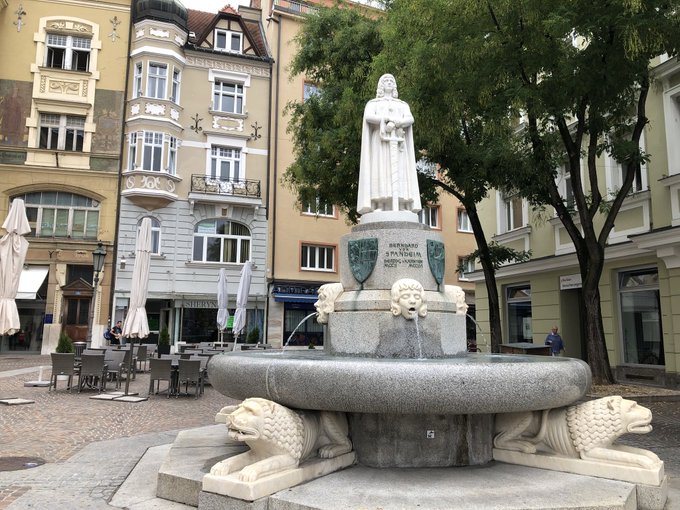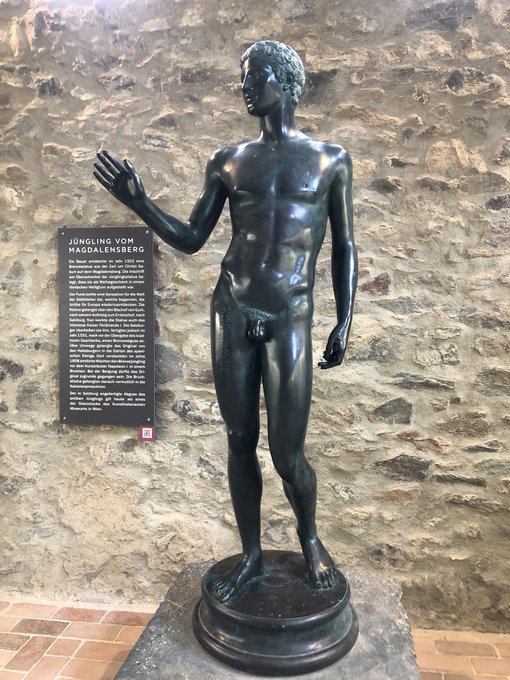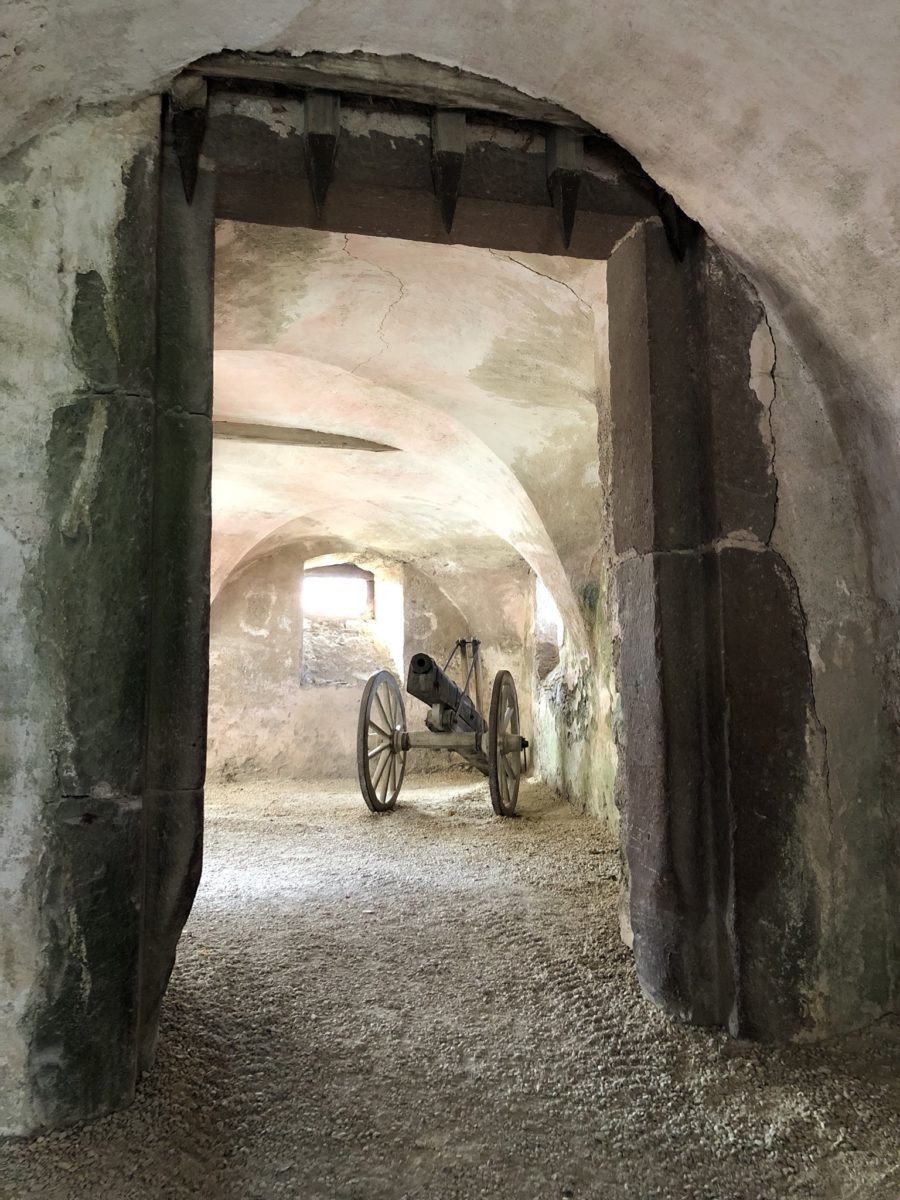September 19, 2018
Klagenfurt is the capital of the modern state of Carinthia, in southern Austria.




Statue of the 18th Century Austrian Empress Maria Theresa in Klagenfurt, Austria

Klagenfurt was founded in 1246 by Bernhard von Spanheim, Duke of Carinthia

But the story of Klagenfurt, and Carinthia, goes back much farther in the mists of time. According to legend, Klagenfurt was founded after a brave local hero slayed a dragon (the “Lindwurm”) which had been terrorizing the area.

Stories of heroes slaying local dragons – like this one in Klagenfurt – are such a staple in this corner of Europe that Slovenia (which was part of the larger March of Carinthia in the early Middle Ages) is often called “the land of dragons”

The Duchy (or March) of Carinthia formed the southeast boundary of the Holy Roman Empire, and was the Germanic successor to an independent Slavic state called Carantania that had developed after the fall of the original Roman Empire.


During Roman times, modern-day Carinthia was the heart of the province of Noricum, which had once been an independent Celtic kingdom until it was absorbed into the empire in 16 BC.


This field in a few kilometers northeast of Klagenfurt, in an area called the Zollfeld, may not look like the capital of a Roman province, but just behind those trees to the right is proof otherwise.

There you’ll find – hidden away in the trees – the amphitheater of Virunum, the capital of Roman Noricum.


There isn’t much left of Virunum, just a couple of Roman gravestones now placed into the walls of nearby churches, like this one at Maria Saal.

But a farmer, digging in a nearby field in 1502, uncovered this lifesize bronze statue dubbed the Youth of Magdalensburg. (This is a copy, the original is now believe to have been lost over a century ago.)

Near the summit Magdalenburg hill itself, archeologists found the remains of a Roman settlement built over what is believed to be the original Celtic capital of Noricum.




The remains at Magdalensburg include the base of a temple to the Roman Emperor Augustus, facing the forum (now the parking lot).

They also include a large complex of metal smelters. Iron was the prize commodity produced by Noricum, and it was exported to all over the Roman Empire.

The Roman settlement at the old Celtic capital was built into the hillside at Magdalensburg, and was an important trading center, but fell out of use when the new and larger provincial capital of Virunum was founded by the Emperor Claudius, very close by.

Remember when I mentioned how Attila the Hun sacked Aquileia, in northeast Italy? Well, Noricum was right in his path.

After the Huns came the Ostrogoths, and then the Lombards (portrayed here in Bled Castle, in Slovenia) …

And then finally Slavs (ancestors of the modern Slovenians), fleeing Avar horsemen from the east, migrated to the area and founded their own principality of Carantania.

Over time the Slavs ended up turning to German nobles, like the Spanheims who founded Klagenfurt, to protect them from Avar raiders, accepting them as dukes of Carinthia (and becoming part of the Holy Roman Empire.)

But undercurrents of continuity remained. For centuries, the Dukes of Carinthia were sworn in by a local Slovenian peasant, over the Prince’s Stone (an upturned Roman column base from Noricum), in a ceremony conducted in Slovene.

They then attended a mass at the village church at Maria Saal, in the Zollfeld (near the former location of Roman Virunum).



And finally they were seated on the double-sided Duke’s Chair (Herzogstuhl), made of old Roman gravestones and dated back for the 800s, on the Zollfeld plain itself to dispense land and accept the pledges of his vassals. (Basically a Carinthian version of the Stone of Scone).


The whole thing had deep historical roots and resonances. And some say that the democratic character of the Carinthian oath ceremony directly influenced Thomas Jefferson’s ideas on the social contract between ruler and ruled.
In theory, perhaps, but in practice the Germanic dukes ruled Carinthia with an iron feudal hand from their capital at nearby Sankt Veit an der Glan.




And very few images drive this feudal dominance home more clearly than their retainers’ castle high atop a limestone outcropping at nearby Hochosterwitz, Austria.

o make the (steep) climb to the top of Hochosterwitz Castle you must pass 14 heavily fortified gates, many protected by their own drawbridges.




Hochosterwitz Castle is claimed to be the inspiration for the castle in Disney’s “Sleeping Beauty” – again with the heroes and dragons.

But the real Hochosterwitz Castle is no fairy tale palace, but a functional fortress for dominating the surrounding area.




Still, the decor at the top of Hochosterwitz Castle definitely had a touch of Magic Kingdom.



After World War I, the new kingdom of Yugoslavia laid claim to all of Carinthia, including Klagenfurt (pictured) as a historic part of Slovenia. The issue was only resolved with a referendum in 1920, in which voters opted to stay part of Austria.




Leave a Reply